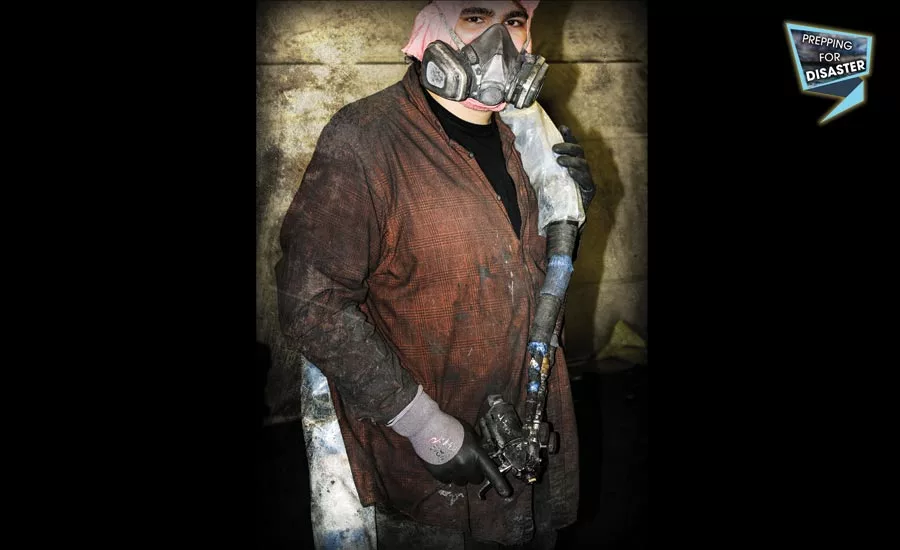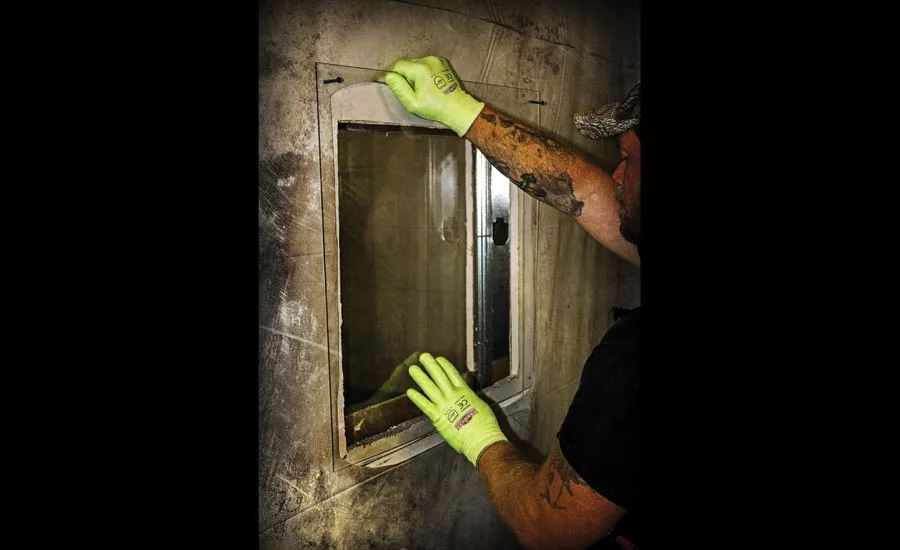PPE During a Natural Disaster
Protecting working hands.

Images courtesy of Radians

Images courtesy of Radians
Disaster sites are a natural breeding ground for health and safety concerns, including severe injuries to fingers and hands. The U.S. Bureau of Labor Statistics (BLS) reports that 70 percent of workers who injure their hands were not wearing work gloves during the accident. Likewise, many restoration contractors who injure a finger or hand during a disaster were not wearing hand protection. Often, the reasons for not wearing work gloves center around complaints of discomfort and lack of dexterity or mobility. Like 30 percent of workers today, even if disaster workers were wearing gloves, most likely the gloves “were inadequate, damaged or wrong for the type of hazard,” according to the U.S. Bureau of Labor Statistics (BLS).
Fortunately, today’s safety gloves are engineered with technological advances that aid in extra protection, dexterity, durability and comfort.
Hand injuries are expensive
In today’s work environment, let’s not forget that hand injuries are the second leading cause of work-related injury—back and neck sprains and strains take first place. The most common causes of hand injuries are blunt trauma followed by cut and laceration injuries from a sharp object, which account for one-third of hand injuries.
A human hand consists of:
- 27 bones—including the eight wrist bones
- Major nerves, including the Ulnar, Median, and the superficial branch of the Radial nerve
- Arteries, veins, muscles, tendons, ligaments, joint cartilage, skin, and fingernails
Because our hands have an intricate structure and a complex anatomy, the potential for a variety of injuries exists. Human hands are truly amazing and are definitely worth protecting properly. The cost of a hand injury can far exceed the cost of a hand protection safety program.
The BLS reports that today the average hand injury claim exceeds $6,000, coupled with a typical worker’s compensation claim of $7,000, for a total of $13,000.
Common hand injuries among disaster workers
OSHA dictates that employers must use Personal Protective Equipment (PPE) to provide additional protection against hazards that can’t be completely eliminated through other measures. According to OSHA, 70.9 percent of arm and hand injuries could have been prevented with PPE, specifically safety gloves. The hand injuries restoration crews need to protect against include burns, bruises, abrasions, cuts, punctures, fractures, amputations, and chemical exposures.
Three effective ways to prevent hand injuries
1. Evaluate hand injury risks at the disaster site by asking yourself and your crew about potential hazards at the job site - like sharp objects.
You can always consult with a safety specialist, safety engineer, or product manager to help you evaluate the potential areas and risk factors that can lead to hand and finger injury at a disaster site.
2. Teach & Train—one of the best ways to behaviorally teach and train is to role play or simulate a hand injury. Tape up worker’s dominant hand with gauze then instruct him or her to perform a couple of simple work tasks and a personal task like texting. The simulation drives home how debilitating a hand injury can be and will help increase compliance.
3. Outfit workers with today’s high performance gloves.
Impact Resistant Gloves
Impact resistant gloves, also known as anti-impact gloves, feature dense thermal plastic rubber (TPR) pads or overlays strategically located along the top of the hand and along fingers to help protect from crushing blows. TPR provides maximum cushioning while not interfering with dexterity. Other features of impact resistant gloves include padded palms, molded knuckle areas and extra grip patches.
Coated Gloves
Numerous types of coated gloves are available today, which include nitrile foam coated, high-visibility knit coated, PU palm coated, crinkle latex coated, and the list goes on. Prominent features of coated gloves include seamless design, breathable knit back, elastic cuffs, and a variety of gauges. The main features of seamless knit coated gloves are their good grip and great dexterity. Solid coated fingers and palm usually provide abrasion and tear resistance. When wearing coated gloves, workers are also able to move their hands more freely and easily in cold conditions. Plus, coated gloves give additional skin protection from harmful chemicals and oils.
Cut-Resistant Gloves
The use of cut-resistant gloves has increased considerably. Glove fabrics and coatings have been improving at a fast and furious pace; thus, cut-resistant gloves are thinner, more comfortable, and provide greater protection. Thanks to Engineered Composite Yarns, such as Kevlar® and steel or gloves made with Dyneema® fiber, licensed manufacturers are creating gloves with superior levels of cut resistance without compromising comfort and dexterity—two major factors in worker compliance.
Engineered yarns, or super yarns, are popular in disaster applications, including glass handling and heavy sheet metal handling where workers are exposed to sharp blades. The gauge and cut level required will depend on the specific task.
Make safety a top priority
Establish work rules that demand when and where gloves are to be worn. Reward compliance and make sure employees know the repercussions if they don’t comply. If you are not sure which glove to choose for a particular job at a disaster site, ask a safety specialist or PPE manufacturer you trust for guidance.
Looking for a reprint of this article?
From high-res PDFs to custom plaques, order your copy today!






